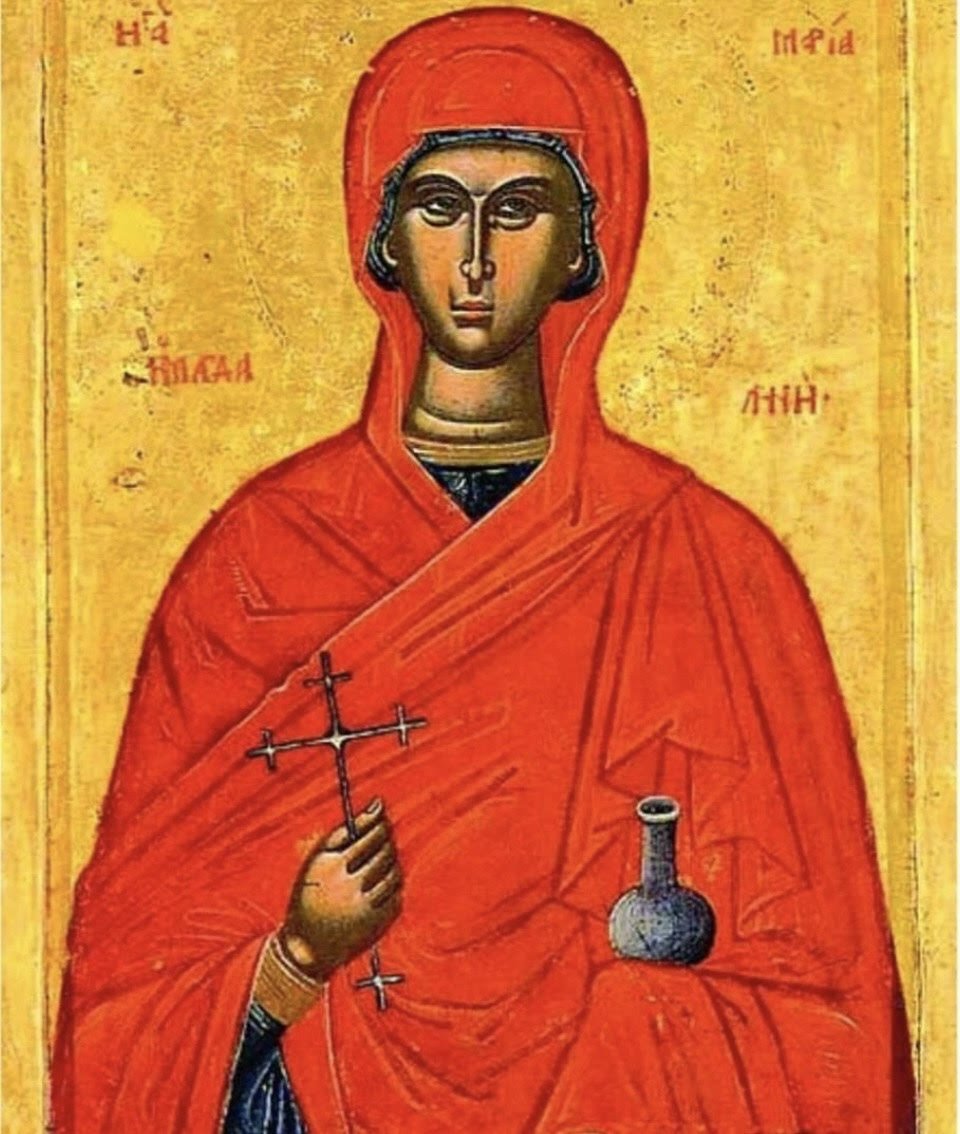Sunday of the Myrrhbearers
🏺Sunday of the Myrrhbearers🏺
Commemorating Mary Magdalene and the Mystresses of the Sacred Oils.
2nd Sunday after Easter
The Myrrhbearers or Myrrhophores where an ancient tradition of mystic women, priestesses and mistresses of the Sacred Oils. The title Myrrhbearer implies the use of Myrrh, an ancient tree resin from which a Sacred Oil was distilled in very ancient pre-biblical time. Myrrh is mentioned in the bible and in many ancient Egyptian texts and temple's walls as one of the Sacred aromatic ingredients applied in the process of mummification and temple rituals.
The Myrrhophores mastered the knowledge and employment of the Sacred Oils for their spiritual and esotheric significance and powers, for healing, for anointing sacraments and for sacred rituals including the anointing of those transpassing the threshold to the spirit realm. To experience spiritual awakening, transfiguration and elevare to cosmic/divine consciousness.
Mary Magdalena (Myriam of Magdala) was a highly advanced Myrrhophore from the temple and magic tradition of Isis... so it was Hatshepsut, Nefertari and, I believe, all Queens of Egypt were high initiates to this sacred knowledge and skills.
Mary Magdalena is well known for the anointing of Christ. Christ (meaning the Anointed One from the Greek word chīstós, derived from the Greek verb chrīō meaning precisely"to anoint"! The translation derived from the Hebrew Mašíah, messiah meaning "-one who is- anointed".
Yesterday, the SECOND SUNDAY AFTER EASTER was the "SUNDAY OF THE MYRRHBEARERS" in the Eastern Orthodox Church and Greek Catholic Church. They remembered, honored and commemorated the Myrrhbearing women who were directly involved in the burial of Christ and discovered the empty tomb following his resurrection. The term traditionally refers to the women with myrrh who came to the tomb of Christ early in the morning to find it empty. In Western Christianity, the women at the tomb, known as the Three Marys.
The week that follows is called the Week of the Myrrhbearers. Many of the Myrrhbearers also have separate feast days on which they are commemorated individually.
All paintings representing Mary Magdalene with a Sacred Oil vessel or alabaster jar:
From the left:
Orthodos Icone
Bernardino Luini
Giampietrino
Pietro Vannucci






